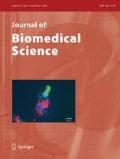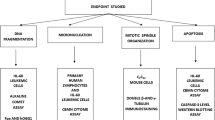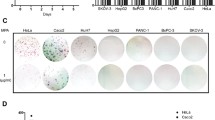Abstract
The influence of cisplatin, an anticancer agent, on DNA synthesis and cell cycle progression of a cisplatin-resistant cell line was investigated. Cell cycle analysis using flow cytometry showed that cytotoxic concentrations of cisplatin caused a transient inhibition of parental HeLa cells at S phase, followed by accumulation at G2 phase. In contrast, the resistant cells progressed through the cell cycle without being affected by the same treatment. However, cell cycle distributions were the same in the resistant and the parental cells at IC50, the drug concentration inhibiting cell growth by 50%. Studies using a [3H]thymidine incorporation technique also demonstrated a transient inhibition of DNA synthesis in HeLa cells by cisplatin; such inhibition was greatly reduced in the resistant cells. These data argue for the hypothesis that the inhibition of DNA synthesis is important in determining cisplatin-induced cytotoxicity. In addition, the accumulation of cells at G0/G1 by serum starvation was not effective in the resistant cells compared to the parental cells, suggesting that the control of cell cycle exiting is also altered in the resistant cells. Taken together, these results support the notion that alterations in cell cycle control, in particular G2 arrest, are important in determining the sensitivity or resistance of mammalian cells to cisplatin and may have a role in clinical protocols.
Similar content being viewed by others
References
Behrens BC, Hamilton TC, Masuda H, Grotzinger KR, Whang-Peng J, Louie KG, Knutsen T, McKoy WM, Young RC, Ozols RF. Characterization of acis-diamminedichloroplatinum(II)-resistant human ovarian cancer cell line and its use in evaluation of platinum analogues. Cancer Res 47:414–418;1987.
Chao CCK, Huang SL, Huang HM, Lin-Chao S. Cross-resistance to UV radiation of a cisplatin-resistant human cell line: Overexpression of cellular factors that recognize UV-modified DNA. Mol Cell Biol 11:2075–2080;1991.
Chao CCK, Lee YL, Cheng PW, Lin-Chao S. Enhanced host cell reactivation of damaged plasmid DNA in HeLa cells resistant tocis-diamminedichloroplatinum(II). Cancer Res 51:601–605;1991.
Chu G, Berg P. DNA cross-linked by cisplatin: A new probe for the DNA repair defect in xeroderma pigmentosum. Mol Biol Med 4:277–290;1987.
Cooper JA, Whyte P. RB and the cell cycle. Entrance or exit? Cell 58:1009–1011;1989.
Eastman A, Richon VM. Mechanisms of cellular resistance to platinum coordination complexes; in McBrien DCH, Slater TF (eds): Biochemical Mechanisms of the Platinum Antitumor Drugs. Oxford, IRL, 91–119; 1986.
Eastman A, Schulte N. Enhanced DNA repair as a mechanism of resistance tocis-diammine-dichloroplatinum(II). Biochemistry 27:4730–4734;1988.
Hamilton TC, Winker MA, Louie KG, Batist G, Behrens BC, Tsuruo T, Grotzinger KR, McKoy WM, Young RC, Ozols RF. Augmentation of adriamycin, melphalan and cisplatin cytotoxicity in drug resistant and sensitive human ovarian cancer cell lines by buthionine sulfoximine mediated glutathione depletion. Biochem Pharmacol 34:2583–2586;1985.
Hospers GAP, Mulder NH, De Vries EGE. Mechanisms of cellular resistance to cisplatin. Med Oncol Tumor Pharmacother 5:145–151;1988.
Knox RJ, Lydall DA, Friedlos F, Basham C, Roberts JJ. The effect of monofunctional or difunctional platinum adducts and of various other associated DNA damages on the expression of transfected DNA in mammalian cell lines sensitive or resistant to difunctional agents. Bichim Biophys Acta 908:214–223;1987.
Lai GM, Ozols RF, Smyth JF, Young RC, Hamilton TC. Enhanced DNA repair and resistance to cisplatin in human ovarian cancer. Biochem Pharmacol 37:4597–4600;1988.
Lehmann AR, Oomen A. Effect of DNA damage on the expression of the chloramphenicol acetyltransferase gene after transfection into diploid human fibroblasts. Nucleic Acids Res 13:2087–2095;1985.
Loehrer P, Einhorn LH. Cisplatin. Ann Intern Med 100:704–713;1984.
Masuda H, Ozols RF, Lai GM, Fojo A, Rothenberg M, Hamilton TC. Increased DNA repair as a mechanism of acquired resistance tocis-diamminedichloroplatinum(II) in human ovarian cancer cell lines. Cancer Res 48:5713–5716;1988.
Micetich K, Zwelling LA, Kohn KW. Quenching of DNA: Platinum(II) monoadducts as a possible mechanism of resistance tocis-diammine dichloroplatinum(II) in L1210 cells. Cancer Res 43:3609–3613;1983.
Mosmann T. Rapid colorimetric assay for cellular growth and survival: Application to proliferation and cytotoxicity assays. J Immunol Methods 65:55–63;1983.
Plooy ACM, van Dijk M, Lohman PHM. Induction and repair of DNA cross-links in Chinese hamster ovary cells treated with various platinum coordination compounds in relation to platinum binding to DNA, cytotoxicity, mutagenicity, and antitumor activity. Cancer Res 44:2043–2051;1984.
Protic-Sablijc M, Kraemer KH. One pyrimidine dimer inactivates expression of a transfected gene in xeroderma pigmentosum cells. Proc Natl Acad Sci USA 82:6622–6626;1985.
Roberts JJ, Thomson AJ. Mechanism of action of antitumor platinum compounds. Prog Nucleic Acid Res Mol Biol 22:71–133;1979.
Rosenberg B. Fundamental studies with cisplatin. Cancer 55:2303–2316;1985.
Rosenstein BS, Chao CCK. Characterization of DNA repair in a mutant cell line derived from ICR 2A frog cells that is hypersensitive to nondimer DNA damages induced by solar ultraviolet radiation. Mutat Res 146:191–196;1985.
Sheibani N, Jennerwein MM, Eastman A. DNA repair in cells sensitive and resistant tocis-diamminedichloroplatinum (II): Host cell reactivation of damaged plasmid DNA. Biochemistry 28:3120–3124;1989.
Sorenson CM, Barry MA, Eastman A. Analysis of events associated with cell cycle arrest at G2 phase and cell death induced by cisplatin. J Natl Cancer Inst 82:749–755;1990.
Sorenson CM, Eastman A. Influence ofcis-diamminedichloroplatinum(II) on DNA synthesis and cell cycle progression in excision repair proficient and deficient Chinese hamster ovary cells. Cancer Res 48:6703–6707;1988.
Vindelov L, Christensen IJ. An integrated set of methods for routine flow cytometric DNA analysis. Methods Cell Biol 33:127–137;1990.
Weinert TA, Hartwell LH. The RAD9 gene controls the cell cycle response to DNA damage inSaccharomyces cerevisiae. Science 241:317–322;1988.
Zwelling LA, Anderson T, Kohn KW. DNA-protein and DNA interstrand crosslinking bycis- andtrans-platinum(II) diamminedichloride in L1210 mouse leukemia cells and relation to cytotoxicity. Cancer Res 39:365–369;1979.
Zwelling LA, Michaels S, Schwartz H, Dobson PP, Kohn KW. DNA cross-linking as an indicator of sensitivity and resistance of mouse L1210 leukemia tocis-diamminedichloroplatinum(II) andL-phenylalanine mustard. Cancer Res 41:640–649;1981.
Author information
Authors and Affiliations
Rights and permissions
About this article
Cite this article
Lin-Chao, S., Chao, C.C.K. Reduced inhibition of DNA synthesis and G2 arrest during the cell cycle of resistant HeLa cells in response tocis-diamminedichloroplatinum. J Biomed Sci 1, 131–138 (1994). https://doi.org/10.1007/BF02257987
Received:
Accepted:
Issue Date:
DOI: https://doi.org/10.1007/BF02257987




